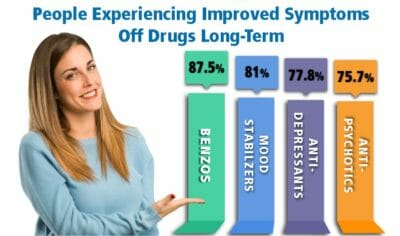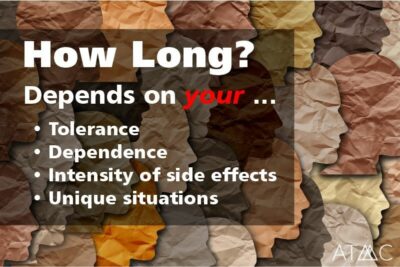Last Updated on September 19, 2022 by
Alternative to Meds Editorial Team
Medically Reviewed by Dr John Motl MD
Table of Contents:
- Video: Antipsychotic Withdrawal Success
- What Is Saphris (asenapine) Used For?
- Saphris (asenapine) Alternative Names and Slang
- Saphris (asenapine) Side Effects
- Saphris (asenapine) Withdrawal Symptoms
- Discontinuing/Quitting Saphris (asenapine)
- Saphris (asenapine) FAQs
- Treatment for Saphris (asenapine) Abuse and Addiction?
Antipsychotics, like Saphris, are generally prescribed at a time of debilitating crisis, with no time or focus available to consider how or when to undertake Saphris withdrawal.
After a crisis passes, one can ask whether moments of upset really necessitate a lifetime of being medicated? Of note, researchers are looking at whether antipsychotic medications actually reinforce psychosis by upregulating dopamine receptors, also called dopamine hypersensitivity, and this is a matter that must be carefully addressed and monitored in recovery.13

Saphris (generic asenapine) is an atypical antipsychotic medication FDA approved for the treatment of schizophrenia and bipolar episodic mania. Saphris does cause weight gain but is noted for not causing as much excess weight gain compared to other antipsychotics.2,7,8
The medication is administered via a sublingual dissolving tablet twice a day. It is a chemical derivative of an earlier tricyclic antidepressant called mianserin. Before beginning or stopping a course of medication, researching the drug and its side effects, withdrawals and other topics is a recommended action. The information below may be helpful to an individual who is facing mental health challenges and gathering information to make the best choices regarding options for health care.
 Saphris has an approximate elimination half-life of 24 hours.
Saphris has an approximate elimination half-life of 24 hours.
 Many adjunct therapies are used in the programs as well, so that maximum client support is made available. Some of these include mind/body techniques like
Many adjunct therapies are used in the programs as well, so that maximum client support is made available. Some of these include mind/body techniques like 







